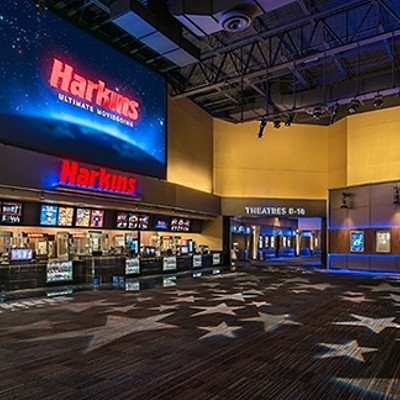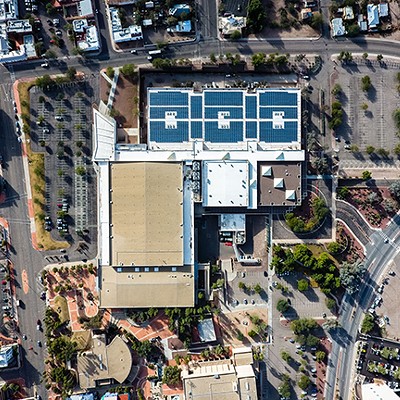The first round in this conflict began with general agreement: A redevelopment proposal by Town West Realty for the corner of Sixth Street and Campbell Avenue wasn't acceptable (See "Housing or Headache?" Feb. 6). Fears were the two-story, mostly four-bedroom, 50-unit project would just be an unruly college student apartment complex.
Based on those concerns, a new approach was tried to devise a proposal acceptable to both developer and neighborhood. Using $2,500 of the association's funds and a similar amount supplied by City Council member Fred Ronstadt's office, a zoning committee of the neighborhood association board worked with the developer's architect to come up with an alternative.
The result: a new four-story project with a large commercial component and about 100 two- and three-bedroom condominium units priced between $150,000 and $250,000. Centered around a high-activity courtyard, the building has no exterior balconies facing the neighborhood but does include underground parking.
Unlike the previous proposal, this one requires both neighborhood and area plan amendments as well as rezoning the property to a high-intensity commercial designation allowing structures up to 140 feet in height. Despite that, the board endorsed the concept.
"It has higher density but lower impact" on the neighborhood, says Sam Hughes association president Mary Zulli. "I can imagine regular people living there." Plus, she adds, the project won't resemble a strip mall.
After supporting the concept, the board took it to a neighborhood meeting. Only a limited number of residents were notified of this gathering, and the 30 or so who attended backed the idea.
In an ensuing story and editorial, the Arizona Daily Star praised the proposal. But those newspaper articles were the first inkling most people in Sam Hughes had about it. Concerned about what was happening, more than a dozen of them demanded the board inform everyone in the area about the project.
Before that could happen, the developer employed the law office of Lewis and Roca. The firm called its own meeting, but again restricted its invitation list.
Frustrated by the exclusionary nature of these gatherings, critics distributed hundreds of flyers door-to-door urging people to attend. Labeled "Warning to Neighborhood Residents," the message was clear: The project should be opposed.
With more than 100 in attendance, the overwhelming majority seemed to disapprove of the proposal. But Zulli says, "A lot of people were brought out by the inflammatory flyer. Initially they were riled up, but at least for those sitting around me, later in the meeting they said of the concept, 'That's great.'"
Project opponent Dottie Daniel sees things differently. She says that even though most people oppose the idea, association leaders "have acted as if they have a mandate from the neighborhood, but they don't. They did not address the problems of a project of this magnitude nor notify the neighborhood before endorsing it."
Zulli responds: "The negative comments are from a relatively small group of people that will get smaller. I think more and more residents will be enthusiastic about the proposal."
A general neighborhood meeting held last week showed that prediction was wrong. With more than 100 in attendance, some backed the idea, but most clearly opposed the project. They called it too big and too ugly while assuming it would just become a college-student housing complex anyway.
"This process has gone awry," offered recently appointed zoning committee member Frank Soltys. To loud applause he said the board needed to abandon its support of the concept and pleaded for the current neighborhood plan to be protected.
For his part, committee chair Simon Washington stated before the meeting that the board has not endorsed a specific plan for the site, since one is still being negotiated with the developer. Washington thinks the final height of the structure, the number of people it houses and the parking arrangement need to be modified.
Washington calls these three issues potential deal-breakers, and says the developer will be put to the test in future negotiations. "The current plan won't be the end product," he says.
Committee member John Schwarz goes even further. He told the crowd last week the group wouldn't accept the high-intensity commercial zoning proposed for the property.
Near the conclusion of the meeting, a speaker said they wanted to see a compromise that was a two-story structure built under the current zoning. Then someone asked, "So what happens next?"
Another meeting called by Lewis and Roca is planned for April 24, and the city's Planning Commission is scheduled to hold a public hearing on the proposal June 4.












